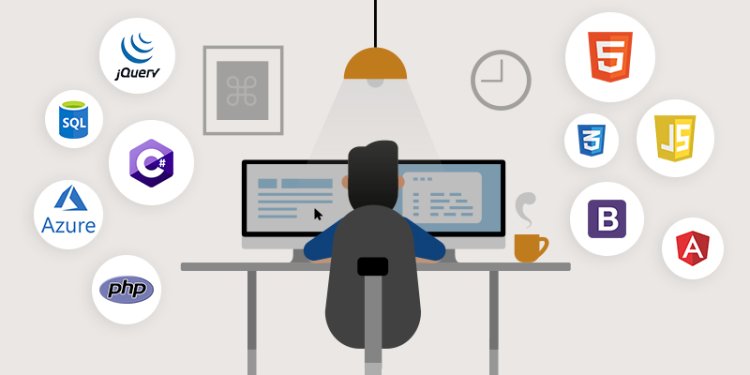What are the Technologies Used in Full Stack Development?
Discover the key technologies used in Full Stack Development, including front-end, back-end, databases, and DevOps tools to build dynamic web applications.
Share this Post to earn Money ( Upto ₹100 per 1000 Views )

Full Stack Development is among the most sought-after skills in the tech industry today. A Full Stack Developer is knowledgeable about front-end and back-end technologies, allowing them to create full web applications. From designing an interactive user interface to managing databases, Full Stack Developers play a crucial role in modern software development. If you're looking to upskill in this domain, enrolling in a Full Stack Developer Course in Chennai can be a game-changer for your career. Let’s dive into the essential technologies that make Full Stack Development so powerful.
Front-End Technologies
1. HTML, CSS, and JavaScript
These three are the foundational technologies of front-end development:
HTML (HyperText Markup Language): Structures the content on a webpage.
CSS (Cascading Style Sheets): Styles the content and enhances the visual appeal.
JavaScript: Adds interactivity and dynamic behavior to websites.
2. Front-End Frameworks and Libraries
React.js: A powerful JavaScript library developed by Facebook, widely used for building user interfaces.
Angular.js: A popular framework by Google that provides a structured way of developing applications.
Vue.js: A lightweight and flexible alternative for building UI components.
Mastering these technologies allows developers to create highly responsive and engaging user experiences within a Full-Stack Developer Architecture.
Back-End Technologies
3. Server-Side Programming Languages
Node.js: Built on Chrome’s V8 JavaScript engine, Node.js allows developers to run JavaScript on the server.
Python (Django, Flask): A robust language that is popular for its simplicity and efficiency in backend development.
PHP: A widely used language for dynamic web applications.
Ruby on Rails: Known for its developer-friendly syntax and quick development process.
Choosing the right backend language depends on the project requirements and scalability needs.
4. Databases
MySQL: A widely used relational database.
MongoDB: A NoSQL database ideal for handling large volumes of unstructured data.
PostgreSQL: A powerful open-source relational database.
Firebase: A cloud-based solution with real-time database capabilities.
Databases play a crucial role in storing, retrieving, and managing application data efficiently.
DevOps and Deployment Technologies
5. Version Control Systems
Git and GitHub: Essential tools for tracking code changes, collaborating, and managing versions.
6. Containerization and Cloud Platforms
Docker: Helps developers create, deploy, and run applications in isolated containers.
Kubernetes: Manages containerized applications at scale.
AWS (Amazon Web Services), Google Cloud, and Azure: Cloud computing platforms that provide hosting, security, and storage solutions.
To streamline development, many companies encourage their teams to adopt DevOps practices using these tools as part of a Full Stack Testing Strategy.
Middleware and API Development
7. RESTful APIs and GraphQL
RESTful APIs: Enable seamless communication between the frontend and backend.
GraphQL: A query language that optimizes data fetching and handling in web applications.
8. Authentication and Security
JWT (JSON Web Token) and OAuth for secure authentication.
HTTPS and SSL/TLS for data encryption.
Understanding these technologies ensures robust security for web applications, protecting them from threats and vulnerabilities.
Why Should You Learn Full Stack Development?
The demand for Full Stack Developers is continuously growing across industries. Companies prefer professionals who can handle both frontend and backend tasks efficiently. By enrolling in a Training Institute in Chennai, you can gain hands-on experience in these technologies and enhance your career prospects.
Benefits of Learning Full Stack Development:
High employability and lucrative salary packages.
Ability to work on diverse projects from scratch.
Versatility in handling different aspects of web applications.
Greater career growth opportunities in the IT sector.
Mastering Full Stack Development requires a deep understanding of multiple technologies. From frontend frameworks like React.js to backend languages like Node.js and Python, a Full Stack Developer must be proficient in various tools to build seamless applications. Whether you're a beginner or an experienced professional, learning these technologies can help you stay ahead in the competitive IT industry. If you want hands-on training, consider joining FITA Academy, where expert trainers provide real-time industry exposure. Start your journey towards becoming a Full Stack Developer today!














